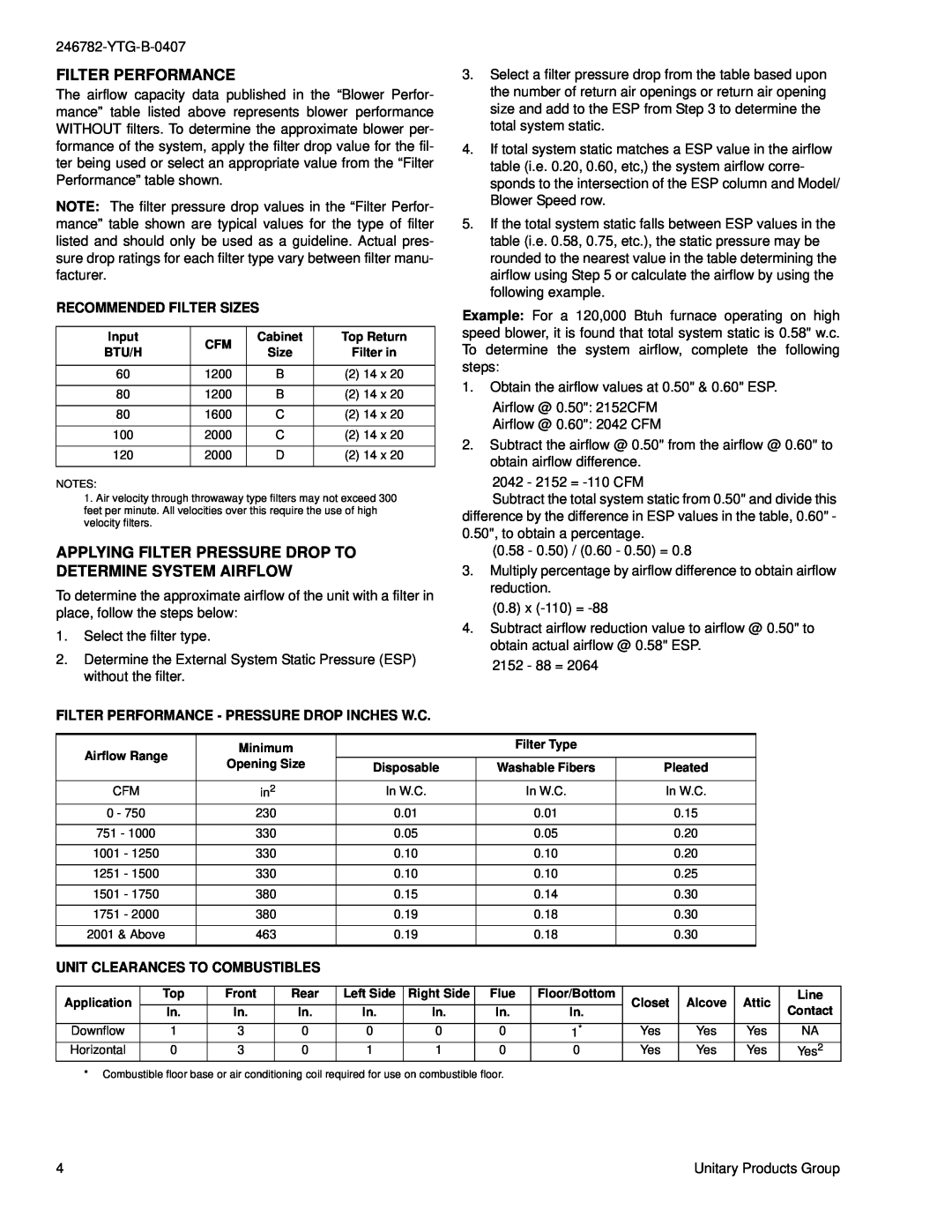Contents
WARRANTY
FEATURES
DESCRIPTION
10-yearwarranty on commercial applications
246782-YTG-B-0407
CABINET AND DUCT DIMENSIONS
ELECTRICAL AND PERFORMANCE DATA
BLOWER PERFORMANCE CFM
246782-YTG-B-0407
Unitary Products Group
FILTER PERFORMANCE
RECOMMENDED FILTER SIZES
FILTER PERFORMANCE - PRESSURE DROP INCHES W.C
UNIT CLEARANCES TO COMBUSTIBLES
THERMOSTAT
THERMOSTAT
THERMOSTAT
2 STAGE PSC
Chart - HP
Thermostat
ACCESSORIES
HIGH ALTITUDE PRESSURE SWITCHES
PROPANE LP CONVERSION KIT
CONCENTRIC VENT TERMINATION
Unitary
5005
Norman
Products
